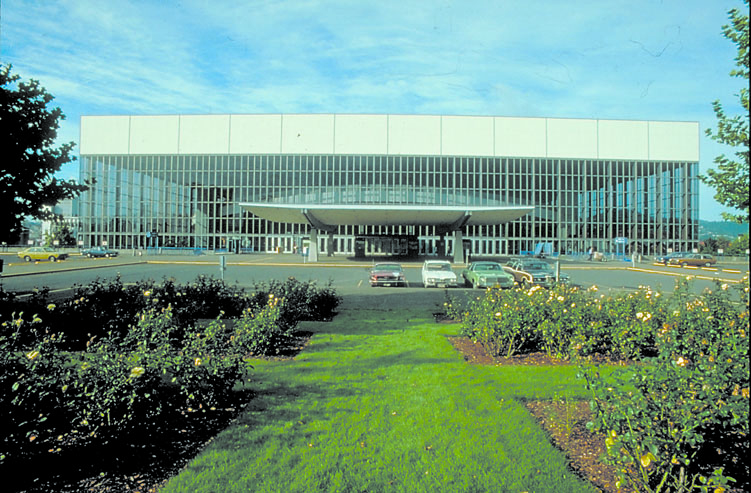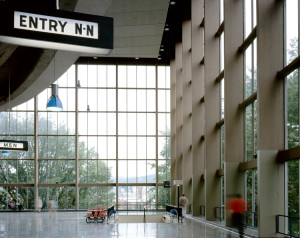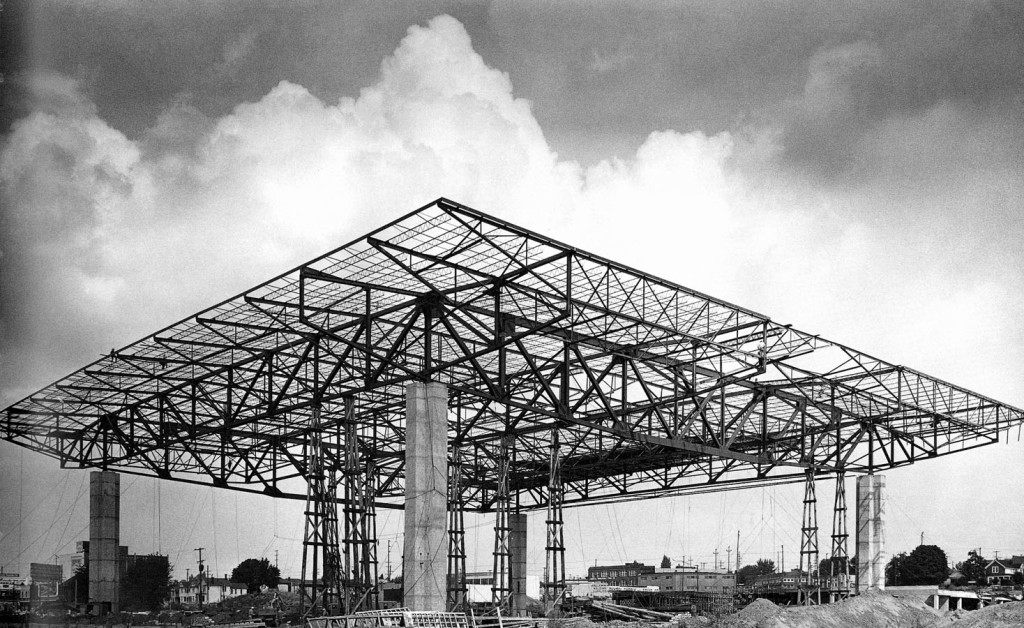Mid-Century Arenas
The emerging interdisciplinary field of Arena Studies focuses on the dwindling global supply of modernist multipurpose arenas—an overlooked subject spanning the fields of historic preservation, architecture, architectural history, engineering, preservation technology, industrial archeology, urban studies, city and regional planning, landscape planning and environmental history.

After World War II, arena builders began to utilize a variety of new technologies and modern building materials to enclose large-scale urban, suburban and rural arenas. Innovative technologies (such as retractable roofs, glass curtain walls and clear-span timber domes) were combined with cutting-edge craftsmanship to create a revolutionary new aesthetic of form-altering functionalism. As an emerging field of study, the topic of historic arenas currently suffers from a dearth of scholarly research, resulting in typological confusion. General and pervasive misidentification and misclassification has greatly hindered the efforts of conservationists to rehabilitate, restore and repurpose these undervalued community resources.
Case Study – Memorial Coliseum
When completed in 1960, Memorial Coliseum, a flat-roofed square “box,” measuring 360 linear feet per side, 100 feet in height, and part of a larger 30- acre area, was a technological feat of engineering and operation unrivaled by any other large civic structure and a fully-articulated example of lnternational-Style Modernism. The building is the only large-scale public arena glass-walled structure of the mid-century retaining its original design, materials, workmanship, highly urban context, and original relationship to nearby geographic features such as the Willamette River.

The Coliseum’s weight is supported by four cruciform-shaped, 7O-foot high reinforced concrete columns, 240 feet apart in one direction and 270 feet in the other. At the column pinnacle, “steel hemispheres,” the first use in arena construction, support the steel roof trusses. These half-round bearing points enable the entire structure to move under force, such as strong winds or earth movements. A prominent feature of the building is the oval, free-standing concrete seating bowl, visible from every exterior vantage point due to the building’s transparency giving rise to the nicknames “Glass Palace” and “Tea Cup in a Box.”

Photo courtesy of the City of Portland Archives.
Inflecting the conservation and re-use of public arenas is the political desire of the community and receptiveness of the team owner and manager. Many arenas were constructed with complicated financing and management agreements providing the sports organization authority over reuse, urban planning, and demolition options. The single, sports purpose arenas require dramatic alterations to adopt the structure to reprogramming like housing, office, or entertainment. Early arenas are, however, established public structures in the heart of the urban fabric offering unique and profitable opportunities for long-term future success. A key element of successful conservation is an understanding of the adaptability of these structures in material composition, plan, and function. The architectural qualities combined with the urban settings provide mid-century arenas with enduring historic value.
Written by Peter Meijer AIA,NCARB, Principal. A special thank you to Matthew Hayes for contributing to this posting.
